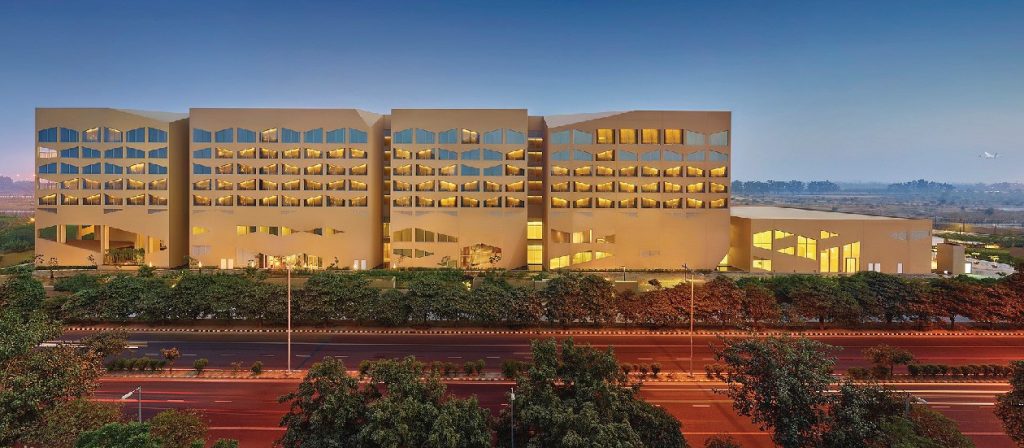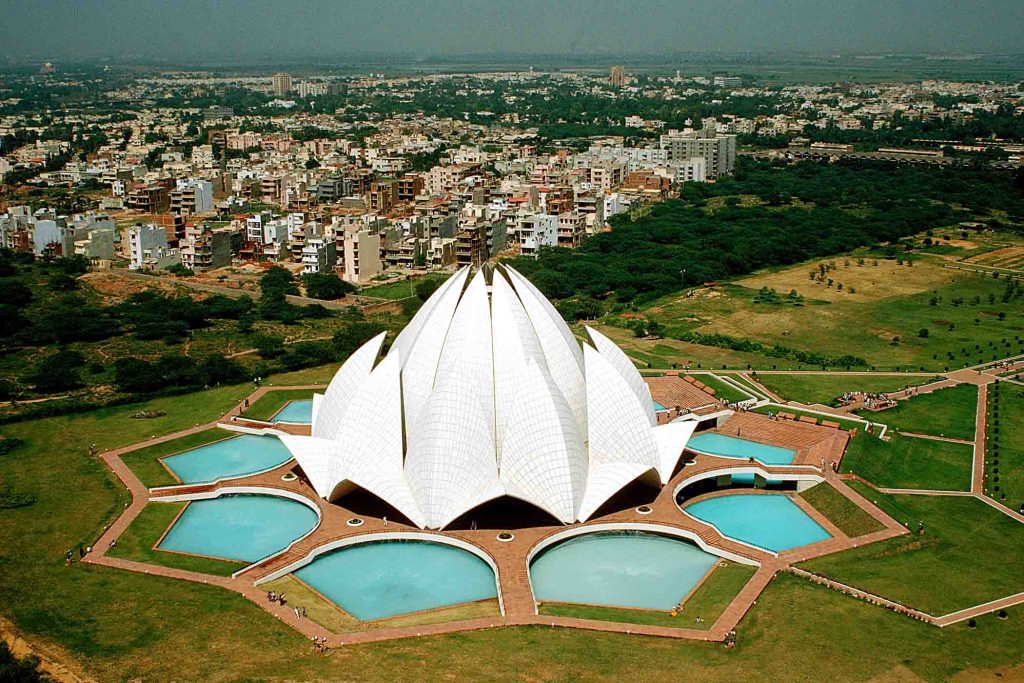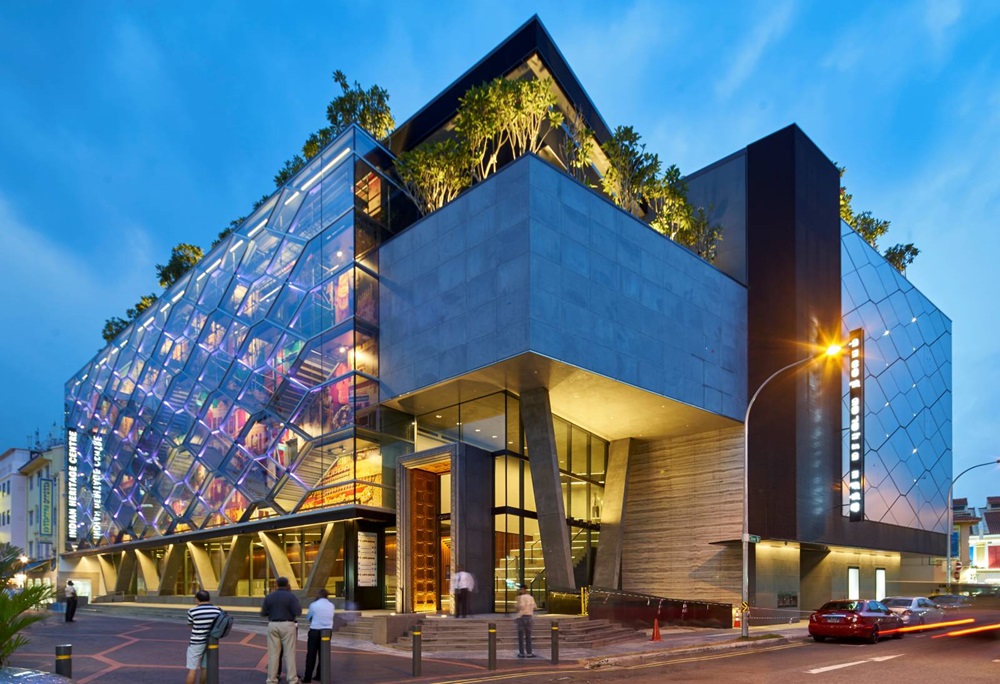Indian contemporary architecture is characterised by a dynamic fusion of traditional elements and modern design concepts; India’s great cultural diversity and geographical variances are reflected in the country’s varied architecture. Local materials, climate factors, and cultural elements are frequently used in designs by different locations.
The increasing environmental concern has led to the adoption of sustainable design principles by numerous Indian modern architects. These principles include the use of energy-efficient gadgets, eco-friendly materials, and designs that promote natural lighting and ventilation. Indian architects of today usually use contemporary building materials and technologies in their designs. This entails applying smart technologies for automation and energy management together with creative uses of steel, glass, and concrete.
Architects frequently draw inspiration from India’s rich cultural and architectural heritage. Traditional elements like courtyards, jalis (perforated screens), and vernacular architectural styles are reworked in modern environments. India is becoming an increasingly urbanised country, which has led to a focus on innovative infrastructure and urban planning. Architects are addressing the challenges posed by densely populated metropolitan areas by creating aesthetically pleasing, practical, and sustainable buildings.
Institutional and commercial spaces now have more of a contemporary look in their design. Modern workplaces, educational facilities, and cultural hubs frequently include state-of-the-art architectural features and technological innovations. There has been a change in Indian residential architecture toward more flexible and open floor plans. Designers are looking into ways to make the most of available space, improve natural light, and build homes that can adapt to the changing needs of their occupants.
The creation of well-designed public places is becoming more and more important. Civic architecture, which includes public spaces and structures owned by the government, frequently strives to be more aesthetically pleasing, inclusive, and accessible. Indian architectural education has changed to include modern design concepts; critical conversation, sustainability, and technology integration in architectural practice are given more weight.
Significance of contemporary architecture
With the wide range of climatic conditions prevalent in India, modern architects are more focused on designing structures that respond to local climate and contextual aspects. This includes methods to enhance natural lighting and ventilation, the use of sustainable materials, and energy-efficient architecture. India’s rapid urbanisation presents a challenge to architects, who must utilise innovative design strategies to balance aesthetics and functionality in public spaces, residential buildings, and infrastructure to accommodate the growing urban population.
 Indian modern architecture strikes a mix between local context-specific requirements and global design inspirations. Architects frequently combine knowledge of India’s distinct cultural, social, and economic circumstances with an awareness of global design trends. Research and education in architecture are becoming more and more important. Academic institutions are modifying their courses to tackle modern issues, and architects are continuously researching to investigate novel materials, technologies, and design approaches.
Indian modern architecture strikes a mix between local context-specific requirements and global design inspirations. Architects frequently combine knowledge of India’s distinct cultural, social, and economic circumstances with an awareness of global design trends. Research and education in architecture are becoming more and more important. Academic institutions are modifying their courses to tackle modern issues, and architects are continuously researching to investigate novel materials, technologies, and design approaches.
Contemporary Indian Architecture

The Indian Heritage Centre in Singapore is one prominent instance of modern Indian architecture. This building, albeit not in India, is a remarkable illustration of how contemporary architecture can use traditional Indian design aspects in a global setting.
The Indian Heritage Centre has an eye-catching modern and inventive architectural form. The structure features a geometric façade, crisp lines, and a uniquely modern style. The building’s façade features elaborate jali work, a characteristic feature of traditional Indian architecture. In addition to offering a hint of Indian style, this perforated screen has functional uses like shading and letting in natural light.
The Infosys Building in Pune is renowned for its environmentally friendly architecture, which includes features like energy-saving technologies and rainwater collection. The Vivanta by Taj Hotel combines modern outside design with Indian architectural elements to create an opulent inner space. The renowned architect Balkrishna Doshi created the Ahmedabad Textile Workers’ Housing, a housing project that blends modernist ideas with an emphasis on communal life.

The Lotus Temple is one of the most recognisable examples of contemporary Indian architecture; lotus blossoms are the source of inspiration for its stylish and symbolic design. The Indian Institute of Management’s new addition in Ahmedabad features a modern campus design with environmental features. Offices and commercial space are housed in the unique, futuristic Cybertecture Egg, a skyscraper shaped like an egg.
The Crystal Towers are residential skyscrapers with an eco-friendly, contemporary design that includes energy-saving elements and green areas. The corporate office building Godrej One is renowned for its use of green technologies and sustainable architecture. The Palmyra House is a modern home that combines modern design ideas with traditional Indian architectural features.





